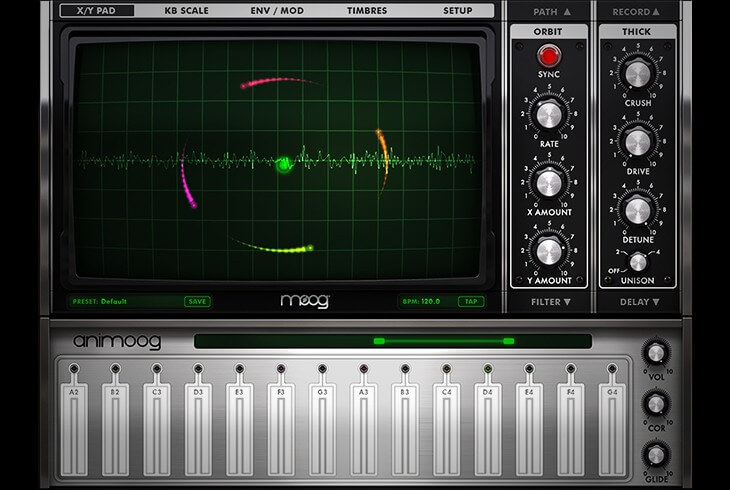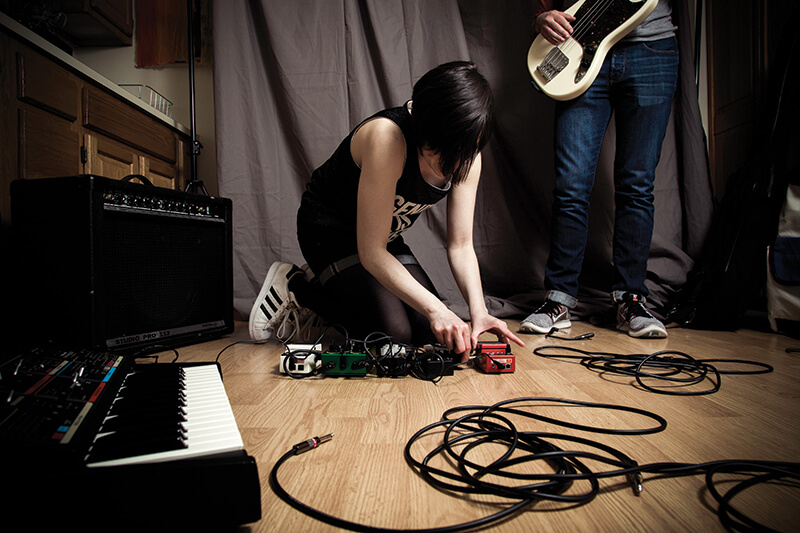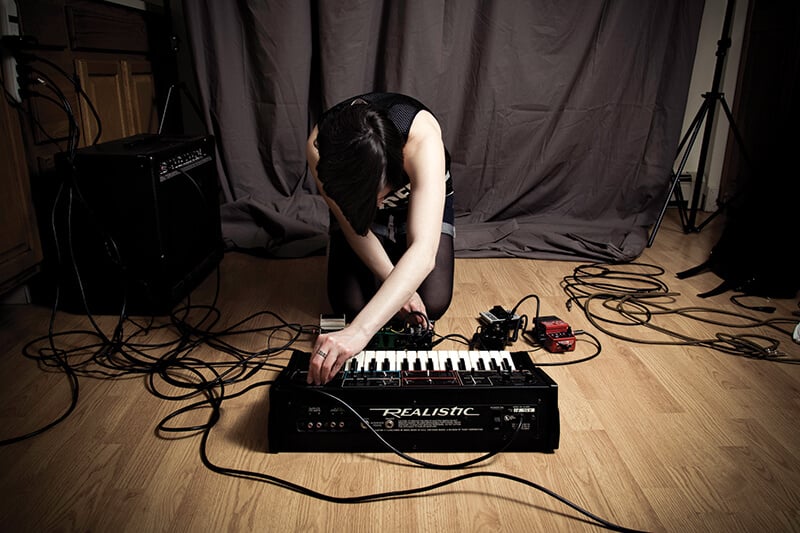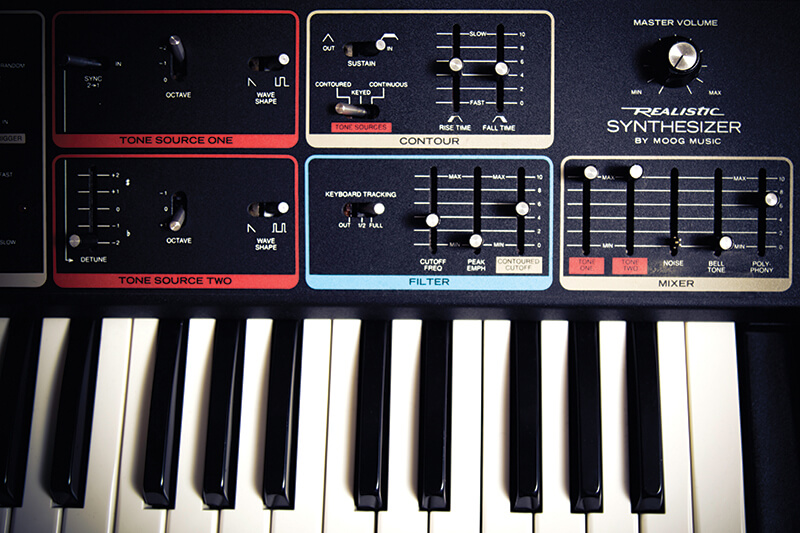Delving into the world of synthesizers without knowing where to start can be intimidating. Here’s what I learned along the way as a total amateur, and what I think are the top 5 things any synth novice should know.
[RELATED: 3 Tips For Getting Great Sounds From Your Analog Synth.]
1. Synth newbies don’t need to break the bank.
The high price point and elusiveness of vintage brand name synthesizers can feel discouraging. Fortunately, technological advancements mean a wide array of free to low-cost smart phone apps and hand-held synths are now widely available.
Synth pioneers Moog offer the iPhone Animoog app for $5.99. Requiring no setup after downloading, it contains a variety of controls, a way to save custom sounds, and much more. Moog recently released a more robust Model 15 modular synth app for $29.99. Highly praised, the online consensus compares it to being just as good as owning an analog model for a fraction of the cost.

Moog Animoog
For a more tactile and simplified experience, pocket-sized synths start at around $25 and can be ordered from most online music retailers. The analog Stylophone Retro Pocket Synth includes a powerful built-in speaker and has a pleasing organ-like tone. Several musicians have incorporated the Stylophone into recordings (David Bowie, Erasure, Pulp to name a few), and Little Boots famously uses one during her live performances.
Newly-released ‘pocket operators’ by Teenage Engineering feature hand-sized programmable digital synths and drum machines. To keep costs low, their build is minimal – imagine a calculator without a case. Packed with studio-quality sounds and extensive presets, they can be linked to each other, modular synths, or almost anything else with a cable, costing around $59 each.
For larger synths, consider buying used and keep an eye out for fellow musicians selling gear. There is an active used market online – just make sure the synth you are looking at is noted as “functioning” or “serviced,” as many non-functional (read: DOA) vintage synths are still sold for parts and repair purposes.
2. There’s no right or wrong way to use a synthesizer.
Everyone is pretty much messing around. Part of the charm of a synthesizer is the randomness of sounds and tones created by plugging in patch cables, turning knobs, and pushing sliders until you hear something you like.

Denise Orxata with fx pedals
Approaching synthesizers as a guitarist, I looked to musicians I admired, such as Annie Clark and Kim Gordon, who often describe using their instrument as a noise box and gleaning knowledge along the way. You don’t need to be a virtuoso pianist or an electrical engineer to use one. The instruction manual for my synth puts it best: “THERE ARE NO RULES. YOU CAN’T HURT IT!”
3. The learning curve on a synthesizer is as big as you want it to be.
Jumping in and randomly moving settings around can be enjoyable, but learning basic terms will provide more control and direction.
Simple explanations of what synthesizers do, the difference between analog and digital, and a breakdown of common terms can be found online. There are several free, in-depth tutorial videos which I’ve found to be the most helpful for me – type in a synth you like and the word ‘tutorial’ into any search engine or YouTube and you’ll find step-by-step demos and explanations. The amount of information can get overwhelming, so take whatever seems most useful for you to get started and build from there.
Once you feel more confident, you’ll find creating your own sounds quite rewarding, but remember:
4. Document the synth settings you like.
Small adjustments in parameters can change what a synth does completely, which can be fun and utterly frustrating at the same time. The most useful tip I’ve seen so far: if you find a sound you like, write it down or take a photo (otherwise you’ll never, ever find it again).
Some analog synths will include a few pages of blank schematics in the manual to record customized settings. If you can draw, sketch out the synth’s layout and make copies to build your own book if you can’t find a blank schematic online. In a pinch, I use my phone’s camera and email myself a description of the sound along with the photo.

Denise Orxata playing the Moog Realistic Concertmate MG-1
Digital synths allow you to save your own presets – just make sure not to overwrite anything already saved.
5. Have fun with your new synth and meet new people!
Going to a local synth meetup with a bandmate exposed me to an enthusiastic and friendly community of collectors and tinkerers. Even though I was one of the few femmes there, most people were happy to answer my questions, and I even had a chance to try out some interesting synths I had never seen (or played) before.
Don’t be afraid to experiment. Ever. Throw guitar pedals into the mix, get loud and noisy, or be as ambient as you want. There are no rules.

ABOUT THE AUTHOR
Denise Orxata is a self-taught guitarist and singer/songwriter based out of the greater Boston area, and a proud owner of a Realistic Concertmate MG-1. You can find D online at www.orxataspace.com or on Twitter @orxata_.
photos by Niki Fandel
What do you think of this special guest article about getting started as a synth novice? Let us know in the comments below or drop a line on the Performer Magazine Facebook page or on Twitter @Performermag. And read more from the special Synth Issue of Performer Magazine.
